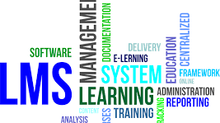WORKFLOW FOR DEVELOPMENT OF ELEARNING MODULES – PART 1
- Dylan Hedges
- May 4, 2016
- 3 min read
It is always a good idea to have a clear process when you want to develop something both effectively and accurately. Of course, there are different approaches to how you can tackle the development of an eLearning module, but through a series of posts, we will discuss what we have found here at Pathways, to be a best practice for programming eLearning modules.
In part 1, we will cover the programming part of the eLearning modules. On a later post (part 2), we will cover the QA and debugging of the modules.
STORYBOARDING
This part is essential, and builds the foundation of a successful eLearning module. Just like algorithms, the storyboards define a guide and a very important tool for programmers to bring modules to life by using rapid eLearning authoring tools.
Usually, storyboards act as a reference for programmers in terms of content to be shown on screen and interactions to be programmed. Other parts that can also be found on the storyboards are audio scripts, documents that need to be attached and images to be used.
These storyboards are generally created by the instructional designers who take the raw content from the client and shape into a more interactive/eLearning suitable content.
AUDIO RECORDING
After the storyboards have been approved, it is always a good practice to send out the audio scripts for recording, even before starting development, that way the audio files will come your way while you are still developing your eLearning module and don’t have to wait until the audio talent finishes recording. Keep in mind that the talent usually takes from a couple of days to one week to record the whole script, depending on the length of the text to be recorded.
PROGRAMMING
The actual programming of the module, can be divided into 6 parts, that are usually done concurrently:
INTERACTIONS
This is one of the most complex/time consuming phases of the development, since in this phase you will create interactions like drag and drops, click and reveals, or even questions with multiple choice answers.
Please keep in mind that, some times, you may have to create interaction using other tools, like Flash, or even embed HTML or Javascript code to the module.
For this kind of interactions, it is necessary to have installed on your computer a local server (Apache server or IIS server), since Javascript and Flash objects that communicate with a tool like Storyline, won’t execute correctly if run locally.
IMAGES
Images add a more visual interpretation to the content, that will help the learners a great deal to understand the different topics covered in the eLearning module.
In this phase, images are placed on screen (usually following the guide from the storyboards), and are formatted nicely using an image editor software, so that they flow with the content.
TEXT
This is one of the quickest parts of the development phases, since the content can be copied directly from the storyboards and placed on screen. Of course, keep in mind that there is usually formatting required, since there are some times spaces that need to be removed, font sizes and colours to be changed, and even accents or special characters if the content is in a different language than English.
ANIMATION
This step is not always necessary, since it always depends on the type of interaction on screen, and also on the client’s expectations. However, it is a good practice to include at least entrance animations to the text and images, so that the module is a bit more dynamic than having a 100% static eLearning module that resembles a PowerPoint presentation.
AUDIO SYNCING
This phase is also time consuming, if the activities and content on the eLearning module are driven by the audio. Also, this phase can be directly tied to our next phase, when closed captions are necessary.
ACCESSIBILITY
This is usually done after everything is else is done and working. This part will be further explained on another post, but it includes adding alt text to the images on screen, setting up the tabbing order, closed captions and creating the text-only document to comply with the Accessibility for Ontarians with Disability Act (AODA).
This is the process we follow to program an eLearning module and we will look more in-depth at each of these six steps further in future posts.































Comments